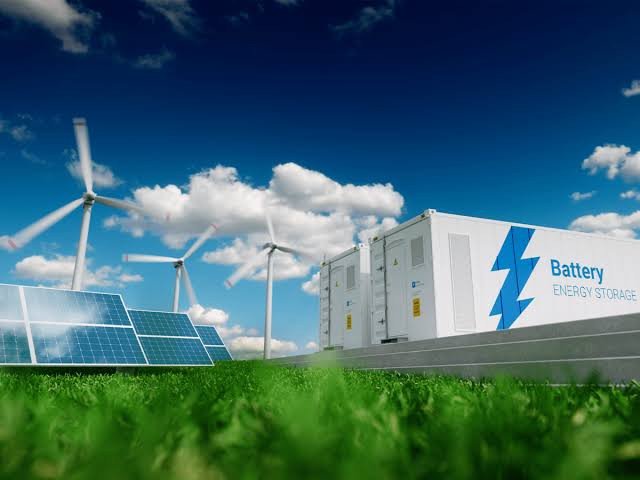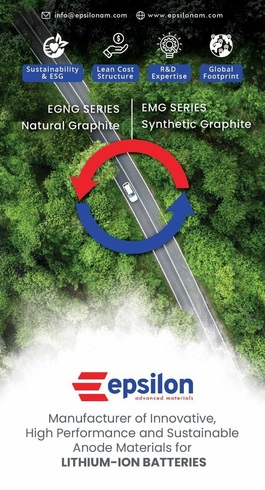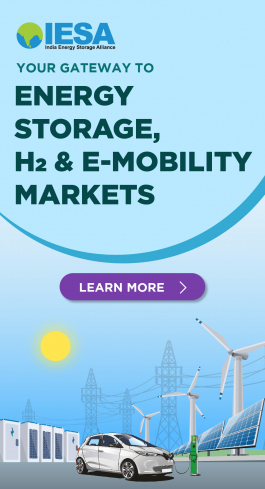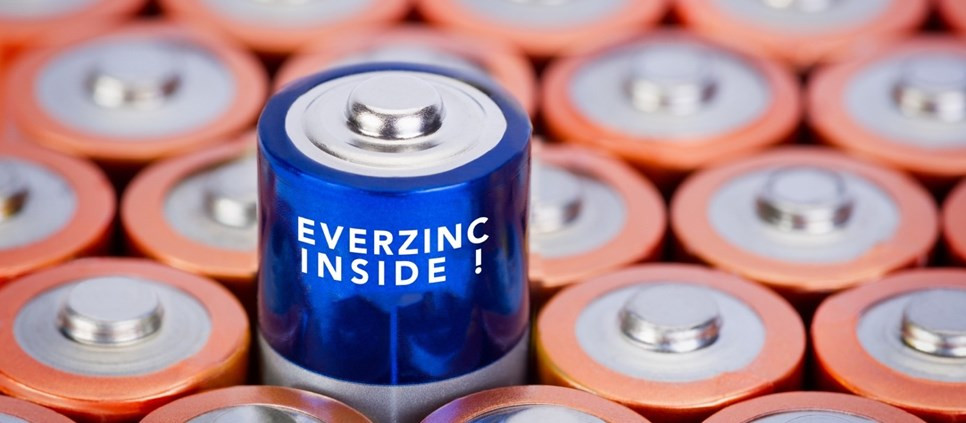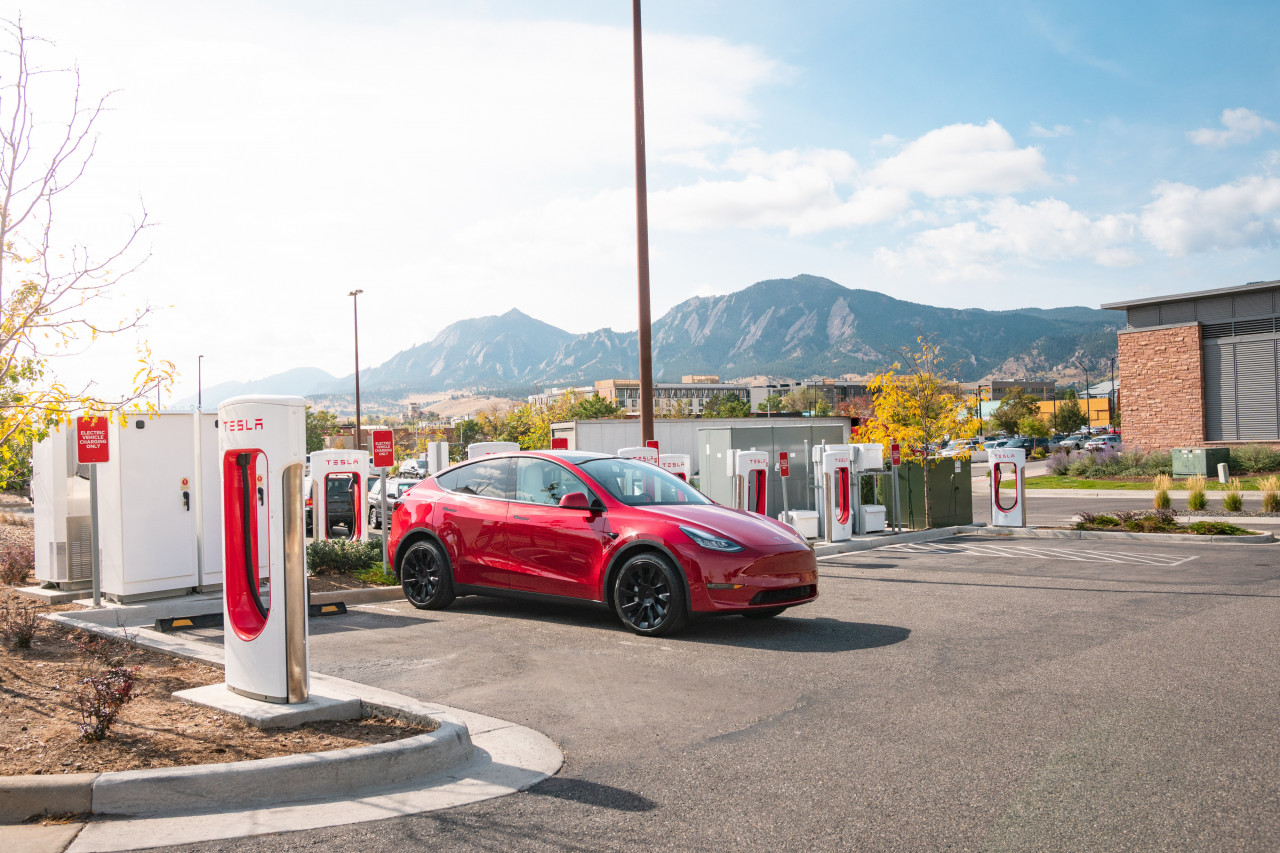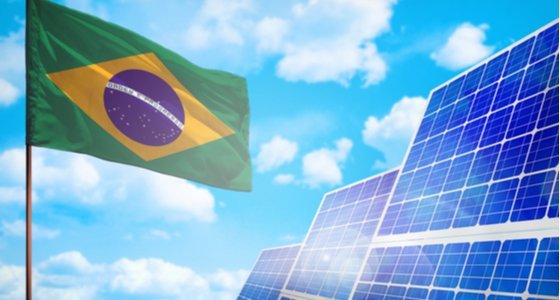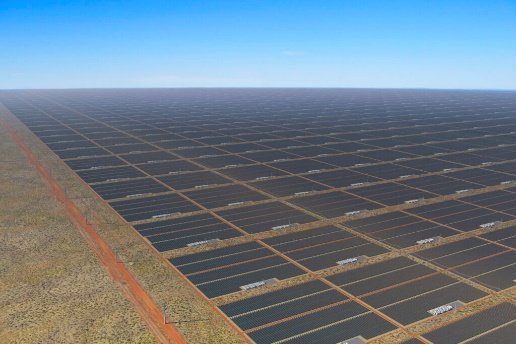Global Progress in 'Green' transition: Europe and UK
Energy storage solutions, whether applied to the power grid or EVs, make systems more flexible and are suitable for meeting low cost, low carbon electricity demands. Following is a glimpse into the energy scenario, energy storage development and, and e-mobility movement around the world, put together by Team ETN.*
EUROPE
Energy Storage
The 'Study on energy storage – Contribution to the security of the electricity supply in Europe', published by the European Commission in May 2020, found that:
The main energy storage reservoir in the EU is currently, and by far pumped hydro storage. However, new battery projects are rising as their prices plummet. Lithium-ion batteries represent most of electrochemical storage projects.
The segment of operational electrochemical facilities is led by UK and Germany.
Behind-the-meter storage is still growing. It is quite heterogeneous, depending on local markets and countries: as a new market, it is still driven by political aspects and/or subsidies.
Notable BESS projects in the region:
Energy storage project in Lithuania - Lithuania's EPSO-G Group's company, Energy Cells had launched an international tender for the system installation services and energy storage technology for an energy storage project in Lithuania. The tender was won by Siemens Energy in Lithuania and Fluence Energy GmbH (a subsidiary of US-based energy storage provider, Fluence). According to the agreement, Siemens Energy and Fluence will work on a joint deployment basis for the design, manufacture, installation and servicing of four transmission-connected energy storage systems totalling 200MW power and 200MWh capacity. The project is one of the largest of its kind in Europe.
The agreement between Energy Cells and the two companies, worth a total of €109 million, aims to connect energy storage facilities to the electricity transmission system by November 2022 as well as provide maintenance services for 15 years after the system is installed.
The Puertollano Solar PV Park and Battery Energy Storage System in Spain - The Puertollano Solar PV Park and BESS project announced in 2019, is a 5,000kW energy storage project located in Ciudad Real, Castile-La Mancha, Spain. The rated storage capacity of the project is 20,000kWh and it uses Li-ion as its storage technology. The project is owned (100 percent) and developed by Iberdrola and will be commissioned this year (2022). The key application for the project is renewable energy integration and electric energy time shift.
Battery Energy Storage System project at Nyrstar's Balen site in Belgium - Trafigura Group in January 2021 announced that it will invest up to €30 million to develop one of Belgium's largest BESS at Nyrstar's zinc smelting facility in Balen, Belgium. Utilizing Lithium-ion battery technology the 100 MWh battery project will be able to store 25 MW over 4-hours, and the BESS system is expected to provide grid stability and balancing services for the Belgium grid, as well as help shift renewable energy production into high energy demand periods. The project was announced by Nala Renewables, a joint venture formed in 2020 by Trafigura (majority owner of Nyrstar) and IFM Investors with the aim to invest in a series of solar, wind and power storage projects globally. The project is set to be commissioned in 2022.
Poolbeg and Southwall BESS projects in Dublin, Ireland - Irish state-owned electricity company, ESB and energy storage technology company, Fluence in October 2021 announced two new battery projects in Dublin, Ireland. The 75MW/150MWh battery in Poolbeg is to be the EU's largest BESS project by energy capacity, the companies noted. A second 30MW/60MWh project is also to be developed at South Wall, with both batteries to be developed at existing ESB plants. The projects have a duration of 2-hours and will provide grid services that would otherwise be provided by fossil fuel power plants. The projects are due for completion by early 2023.
E-mobility
Electric car sales continued to pick up in Europe in 2021 after its 2020 boom, reaching the world's highest electric car penetration rates as per IEA report. The main factors underpinning EV growth in Europe are the tightening CO2 emissions standards in the region in 2020-21, the expansion of purchase subsidies and tax benefits in major markets.
The electric car sales in the region continued to increase in 2021 by more than 65 percent year-on-year to 2.3 million, after the boom of 2020. During the 2016-2021 period, EV sales in Europe increased by a compound annual growth rate (CAGR) of 61 percent -- the world's highest even above China (58%) and the United States (32%).
Electric cars accounted for 17 percent of Europe's total auto sales in 2021 but the distribution is uneven across countries.
Germany remains the largest market in terms of the number of EVs sold, where electric cars accounted for 25 percent of new cars sold overall. Germany offers some of the highest subsidies in Europe.
In terms of the market share, the countries with highest market share for new electric car sales in 2021 in Europe are Norway (86%), Iceland (72%), Sweden (43%) and the Netherlands (30%), followed by France (19%), Italy (9%) and Spain (8%).
In 2021, there were about 5.5 million electric cars on European roads – more than three-times the stock of 2019 before the Covid-19 outbreak.
Another, segment of EVs booming in the region are the electric buses. Industry reports estimate EU electric bus market revenue could be $4 million by 2027. The key players that continue to invest in R&D activities, innovations, partnerships, and mergers & acquisitions in the e-bus space are Daimler AG, Proterra, Inc., Beiqi Foton Motor Co., Ltd., Ebusco, Irizar S.C., Anhui Ankai Automobile Co., Ltd., and Iveco SPA.
Green Hydrogen
The European Green Deal has identified that green hydrogen could play a key role toward Europe's clean energy transition and ensuring circular economy.
While renewables are expected to decarbonise a large share of the EU energy consumption by 2050, it will not decarbonize all of it. Hydrogen, therefore, is recognized for its a strong potential to bridge some of this gap, as a vector for renewable energy storage, alongside batteries, and transport, ensuring back up for seasonal variations and connecting production locations to more distant demand centres. Hydrogen has been particularly identified as crucial for replacing fossil fuels in some carbon intensive industrial processes, such as in the steel or chemical sectors, lowering GHG emissions and further strengthening global competitiveness for those industries. Also, for hard to abate parts of the transport system, in addition to what can be achieved through electrification and other renewable and low-carbon fuels.
In its strategic vision for a climate-neutral EU published in November 2018, the share of hydrogen in Europe's energy mix is projected to grow from the current less than 2 percent (primarily used to produce chemical products, such as plastics and fertilizers) to 13-14 percent by 2050.
In May 2022, the Commission published a staff working document with REPowerEU plan, where it outlined a 'hydrogen accelerator' concept to scale up the deployment of renewable hydrogen, which will contribute to accelerating the EU's energy transition and decarbonizing the EU's energy system. The REPowerEU plan's ambition is to produce 10 million tons and import 10 million tons of renewable hydrogen in the EU by 2030 – a substantial increase from the 5.6 million tons foreseen within the revised Renewable Energy Directive, published in July 2021. The REPowerEU plan also commits to complete the first IPCEI on hydrogen, which is IPCEI Hy2Tech, which aims at developing innovative technologies for the hydrogen value chain to decarbonise industrial processes and mobility. The 41 hydrogen projects under the IPCEI Hy2Tech were approved in July 2022.
Notable hydrogen projects announced in 2021-22:
European Commission approved a €5.4 billion hydrogen project - In July 2022, the European Commission approved a €5.4 billion ($5.4 billion) hydrogen project jointly funded by 15 EU countries and 35 companies including Alstom and Daimler Truck seeking to gain the edge in an innovative sector. Other participating companies include Ansaldo, Bosch, Enel, Fincantieri, Orsted and Plastic Omnium. The group will take part in 41 projects in the hydrogen scheme focusing on generation of hydrogen, fuel cells, storage, transportation and distribution of hydrogen and end-user's applications, in particular in the mobility sector.
Shell announces to build Holland Hydrogen I project - Oil major, Shell announced this July to have taken the final investment decision to build Holland Hydrogen I, which will likely be Europe's largest renewable hydrogen plant once operational in 2025. The 200MW electrolyser will be constructed on the Tweede Maasvlakte in the port of Rotterdam and will produce up to 60,000 kilograms of renewable hydrogen per day. The renewable power for the electrolyser will come from the offshore wind farm Hollandse Kust (noord), which is partly owned by Shell.
Plug Power to build a 100MW green hydrogen plant in the Belgian port of Antwerp-Bruges - In June this year, US electrolyzer manufacturer, Plug Power announced that it will build a 100MW green hydrogen plant in the Belgian port of Antwerp-Bruges, likely becoming one of Northern Europe's largest when it comes online in 2025. The project will mark the opening play of the port's plan to become a hydrogen hub for Europe. The facility will produce 12,500 tonnes of green hydrogen per year at full capacity, supplying hydrogen for "multiple clients" at the port, Plug Power said, noting that Antwerp-Bruges sits at the centre of the largest chemical industry cluster in Europe.
HyDeal Spain to supply renewable hydrogen in Europe - HyDeal Spain which is the first industrial implementation of the 'HyDeal Ambition' announced in 2021, will be supplying renewable hydrogen for the production of green steel, green ammonia, and green fertilizers in Europe. Recently, IRENA ranked the project as the largest giga-scale renewable hydrogen project globally. The anchor sponsors include international steel manufacturing corporation ArcelorMittal, Spanish gas transmission system operator Enagás, Spain's chemical group Fertiberia and Madrid-based hydrogen company DH2 Energy. HyDeal Spain's production is planned to start in 2025 and the total installed capacity is expected to reach 9.5 GW of solar power and 7.4 GW of electrolyzers by 2030.
UNITED KINGDOM
Energy Storage
According to the UK Battery Energy Storage Projects Database Report 2021, the UK has 1.3GW of installed battery storage capacity and it is forecasted to increase to 4.5GW by the end of 2022.
The total pipeline of battery storage projects is 16.5GW (686 sites). The total operational capacity for battery storage in the UK is 1.3GW with 130MW having been commissioned already as of May 2021. The graph below, summarises the remaining 2021 site prospects, within the total pipeline of 686 sites.
Notable BESS Projects in 2021-22 in the UK:
InterGen to build the UK's largest battery energy storage facility to date - In January 2021, the UK's Department of Business, Energy and Industrial Strategy (BEIS) gave the go-ahead for InterGen to build the country's largest battery energy storage facility till date at DP World London Gateway, a new port and logistics center on the Thames Estuary in Essex. With £200 million investment in the project, InterGenwill build a 320 MW / 640 MWh lithium-ion battery site, making it 10 times larger than the largest operational battery in the UK. It will also overtake the UK's biggest active battery project to date, the 50 MW / 75 MWh Thurcroft battery storage site in South Yorkshire. The storage facility is expected to be online by 2024, with construction scheduled to begin in 2022.
Penso Power's Mintey BESS Project becomes EU's largest operational battery storage project - Penso Power's Mintey Battery Energy Storage Project in near Mintey, Wiltshire is reportedly Europe's largest operational battery storage project. It entered full operation in July 2021 and consists of two batteries of 50MW and plans to expand the site further by 50MW. The 150MW Minety battery storage facility uses lithium-iron-phosphate (LiFePO4)/ ternary lithium battery technology for storing electricity. China Huaneng Group has been the main contractor responsible for the construction and operation of the first two 50MW battery storage units. Sungrow, another China-based player, integrated the battery storage systems for the 100MW project by using lithium batteries supplied by Samsung and Contemporary Amperex Technology (CATL). Limejump, a subsidiary of Shell, has been responsible for optimizing the use of batteries at the site through its Virtual Power Platform (VPP) for the maximum utilization of renewable power in the area and Eclipse Power Networks, an independent distribution network operator (IDNO), has been in charge of the grid connection for the project.
Fotowatio Renewable Ventures (FRV) and Harmony Energy to build the largest BESS project in the UK by 2023 - In July 2022, Fotowatio Renewable Ventures (FRV) and UK developer Harmony Energy announced to have started initial construction works at the 99MW/198 MWh Clay Tye energy storage project in Essex, south-east England. The project uses lithium-ion batteries (Tesla megapack), and it will serve to store energy from RE sources and provide peak time flexibility to the UK National Grid. Scheduled to be completed by first quarter of 2023, the project will be the largest battery energy storage system (BESS) in the UK once operational.
E-mobility
With UK government's push toward vehicle electrification, more than a quarter of a million EVs travel on UK roads and sales of plug-in vehicles have reached all-time highs, announced the UK government's, Department of Transportation in May 2022. With 327,000 EVs registered in 2021 alone – a 77 percent rise compared to 2020, UK boasts of soaring EV sales.
The uptick in EV sales can be attributed to UK government's pledge to end the sale of new petrol and diesel petrol and diesel vehicles by 2030, and for all new cars and vans to be fully zero emission at the tailpipe by 2035.
The UK not only hopes to be a frontrunner in EV, but it aims to build a robust EV charging infrastructure with one of the most extensive networks of rapid chargers in Europe. Recently, the Department of Transportation released the 'Electric Vehicle Infrastructure Strategy', backed by £1.6 billion funding, to boost on-street EV charging by 10-fold and eradicate concerns over 'range anxiety' across the UK. By 2030, the UK expects to reach 300,000 public electric vehicle charge points – equivalent to almost 5 times the number of fuel pumps on UK roads at present.
According to a report by the Society of Motor Manufacturers and Traders (SMMT), a lobby group in the UK, one in five cars in the first half of 2022 was an electric vehicle. As per the report, 14.4 percent of all registrations so far this year were for pure battery electric vehicles (BEV) with plug-in hybrid vehicles (PHEVs) accounting for 6.4 percent of the UK market.
According to SMMT figures, Vauxhall Corsa remains a popular choice among EV buyers in the UK. The Tesla Model Y was second in June 2022 – and also featured in the top 10 for the year-to-date.
Hydrogen
In August 2021, the UK Government launched its first-ever vision to kick start a world-leading hydrogen economy set to support over 9,000 jobs and unlock £4 billion investment in the UK by 2030. As a part of its Hydrogen Strategy, the UK Government announced that it will work with the industry to meet its ambition for 5GW of low carbon hydrogen production capacity by 2030 as well as for powering transport and businesses, particularly heavy industry.
The government analysis suggests that 20-35 percent of the UK's energy consumption by 2050 could be hydrogen-based. The new energy source could be critical to meet the country's targets of net zero emissions by 2050 and cutting emissions by 78 percent by 2035 – a view shared by the UK's independent Climate Change Committee.
The government in considering developing a hydrogen business model based on the UK's previous success with offshore wind, where early government action coupled with strong private sector backing has made UK the largest global player in offshore wind. One of the main tools used by government to support the establishment of offshore wind in the UK was the Contracts for Difference (CfD) scheme, which incentivises investment in RE by providing developers with direct protection from volatile wholesale prices and protects consumers from paying increased support costs when electricity prices are high.
In addition to the CfDs, the government is consulting on the design of the £240 million Net Zero Hydrogen Fund to support the commercial deployment of new low carbon hydrogen production plants across the UK.
Notable hydrogen projects announced in 2021-22 in the UK:
Whitelee green hydrogen project - In November 2021, the UK government announced funding of £9.4 million for the development of trailblazing hydrogen project in Glasgow, Scotland. The Whitelee green hydrogen project will develop the UK's largest electrolyser, to store energy. It will be located alongside ScottishPower's Whitelee Windfarm, the largest of its kind in the UK, and will produce and store hydrogen to supply local transport providers with zero-carbon fuel. Developed by ITM Power and BOC, in conjunction with ScottishPower's Hydrogen division, the facility will be able to produce enough green hydrogen per day – 2.5 to 4 tonnes – that, once stored, could provide the equivalent of enough zero-carbon fuel for 225 buses travelling to and from Glasgow and Edinburgh each day.
HyGreen Teesside project - In November 2021 British Petroleum (BP) announced its plans to set up a large-scale green hydrogen production plant in northeast England, generated by wind, water and solar energy to support Britain's move away from fossil fuels. The project, dubbed as HyGreen Teesside, aims to produce 60 MWe (megawatt electrical input) of "green" hydrogen which is derived from renewable sources by 2025. According to BP, the HyGreen Teesside project will be developed in multiple stages and can deliver up to 500 Mwe of hydrogen production by 2030. BP is expected to start production by 2025 and final investment decision on the project is expected in 2023.
Tees Green Hydrogen project - In March 2022, EDF Renewables announced EDF Renewables UK and Hynamics, (a subsidiary of EDF Group specializing in hydrogen) will be investing in Teesside operation to develop a green hydrogen production centre in the vicinity of the former Redcar steelworks. The Tees Green Hydrogen project will be using the green electricity from nearby Teesside Offshore Wind Farm along with a new solar farm, which EDF Renewables UK intends to construct near Redcar, to power its hydrogen electrolyzer. The project will supply local business customers with hydrogen to support decarbonization efforts and a significant reduction in industrial pollution.
Scottish Power to build a green hydrogen production plant at Felixstowe, England - In August 2022, Spain's Iberdrola group through its Scottish Power subsidiary announced its plans to build a green hydrogen production plant at Felixstowe, England – the UK's largest port. Iberdrola will invest GBP 150 million (€170 million) in the project, which is expected to be completed in 2026. As per reports, the first phase of the project is set to go online in 2026, and the project will have the capacity to produce 14,000 tons of hydrogen per year through electrolyzers, and this capacity may be doubled in the future. The hydrogen generated at the plant will be supplied to vehicles and machinery used at the port, as well as trains that transport goods to the port. Additionally, the facility also has the potential to be used for production of ammonia or ethanol, which could be used as clean fuels for maritime transport, or for export to international markets.
* This is a 12-part series story. For other region-wise articles on the series, use the following thread '2022 Global Progress in 'Green' transition'.


